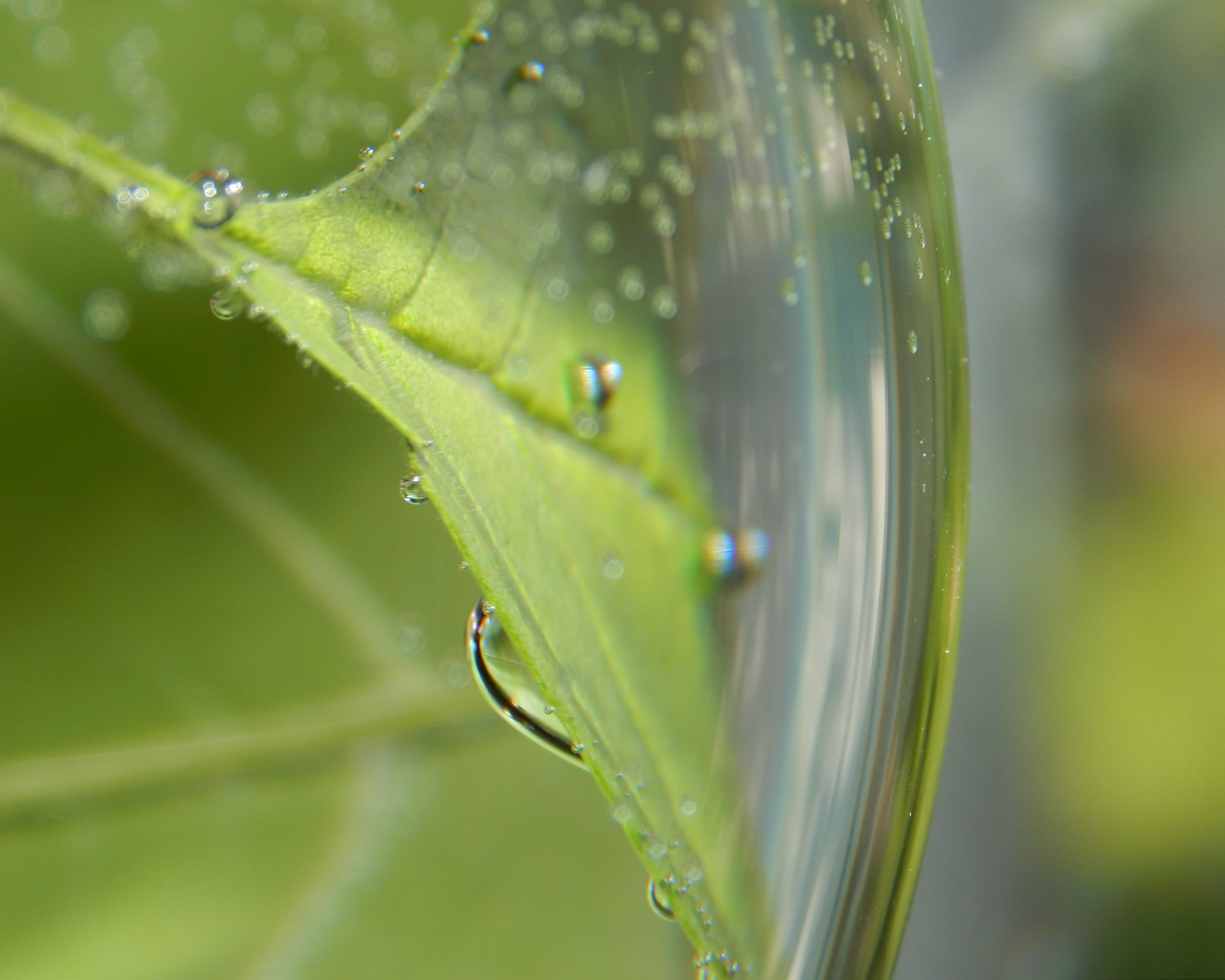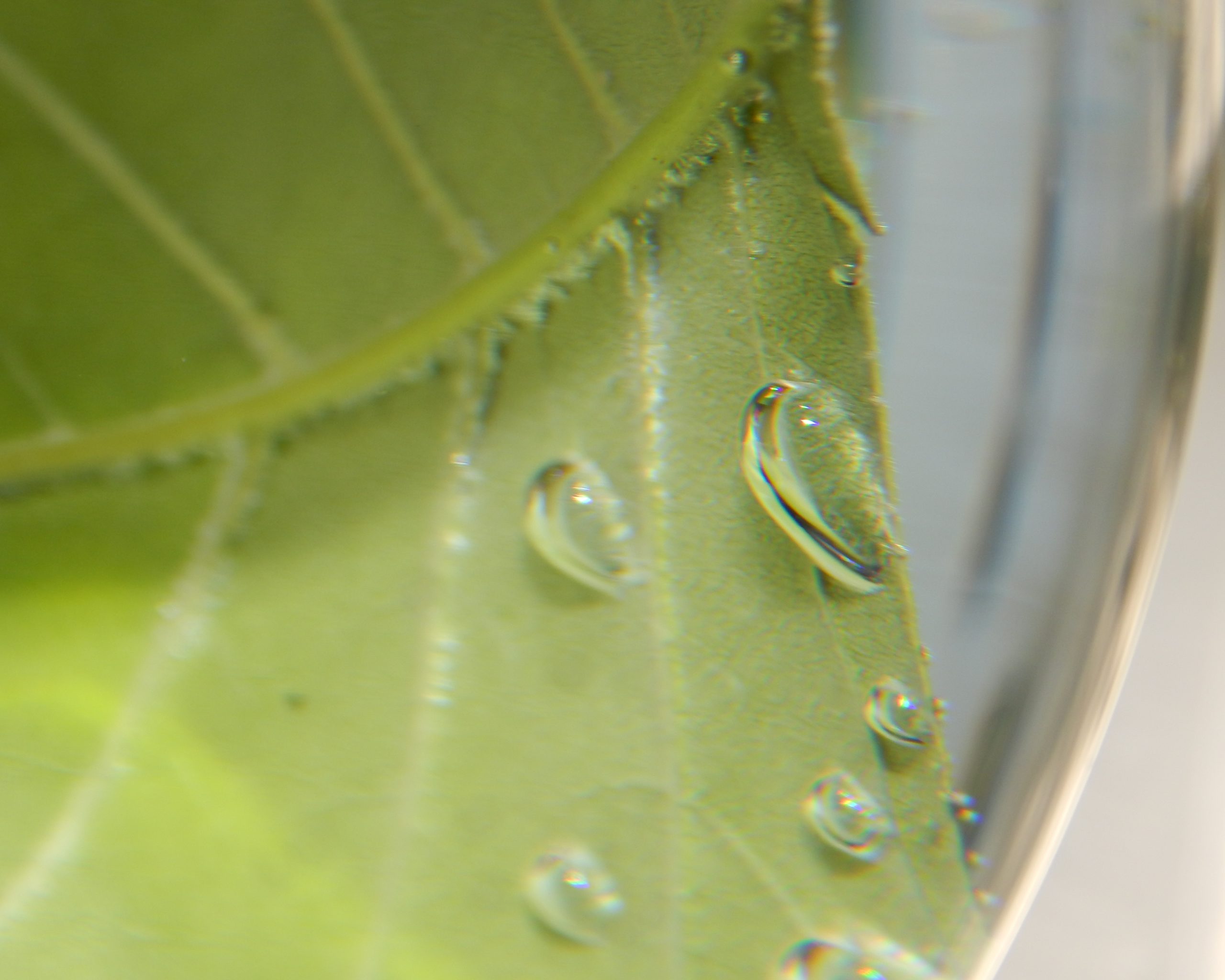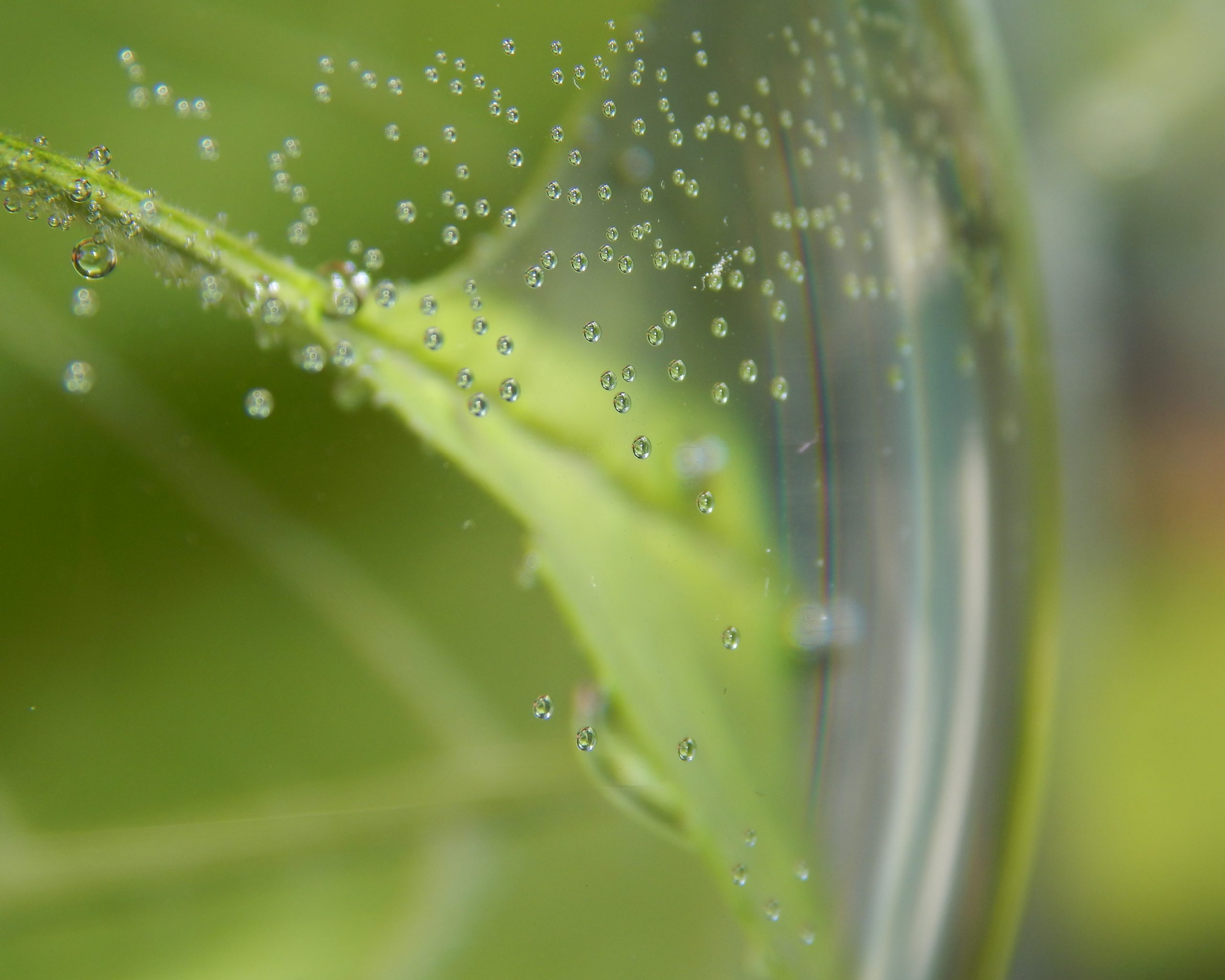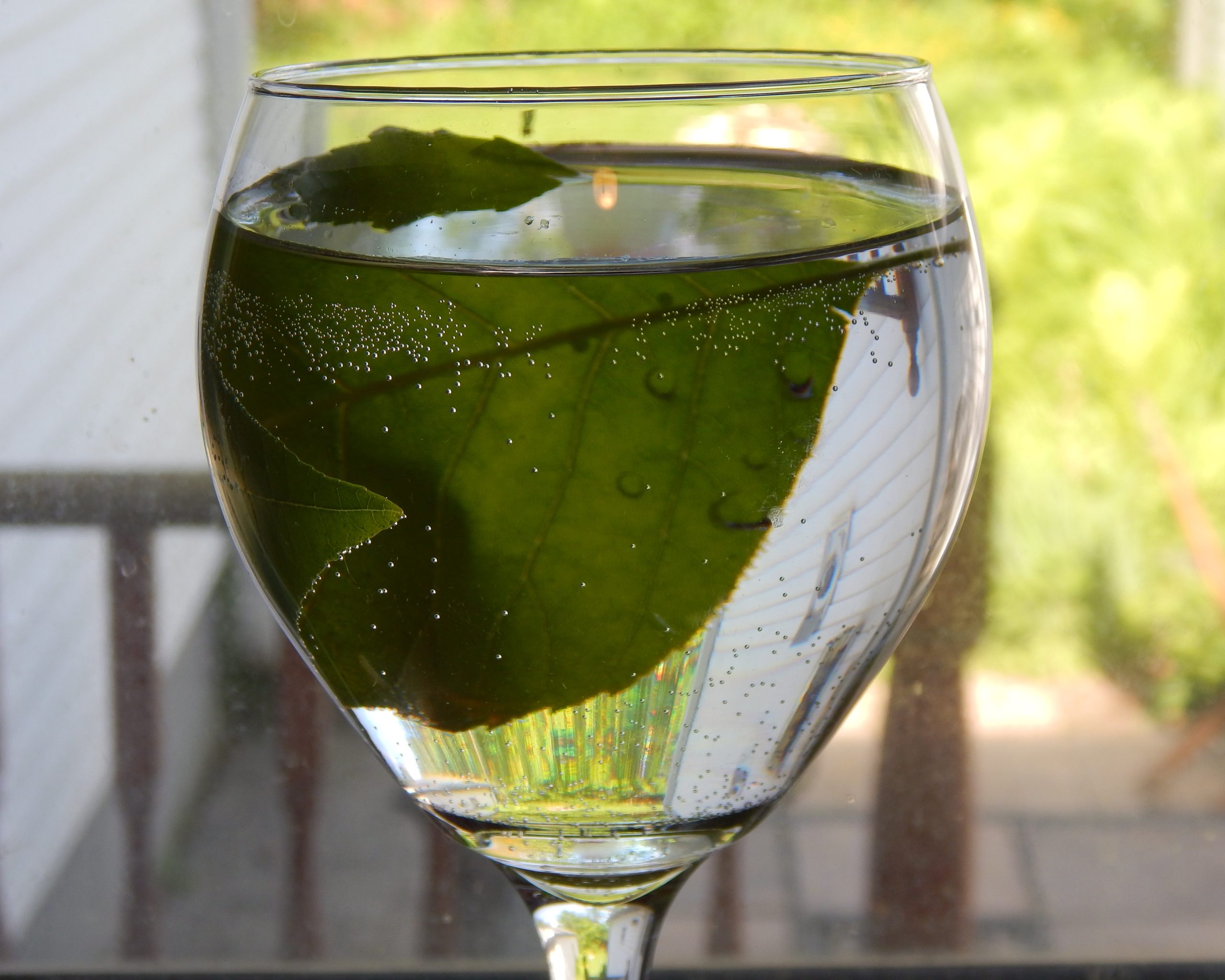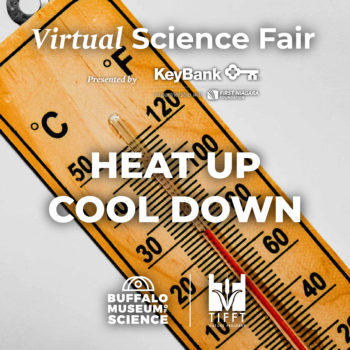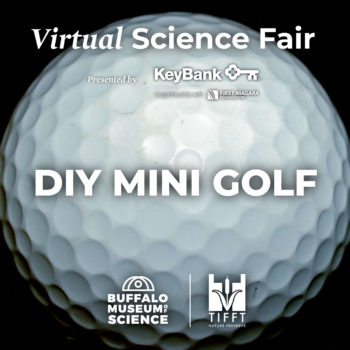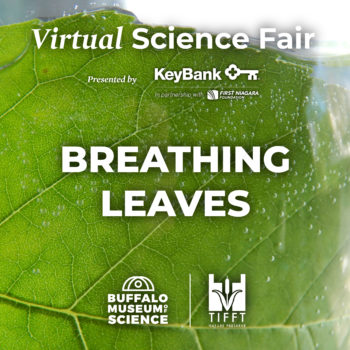Breathing Leaves

Have science fun as a family! Complete activities with parental supervision.
Materials:
- Freshly collected leaf
- Clear bowl or cup large enough to submerge the leaf
- A sunny window
Procedure
- Collect a fresh leaf from outside. A medium-sized leaf like a maple leaf is ideal. Make sure to include the leaf’s stem.
- Immediately bring the leaf inside and place in a bowl or cup of water. Be sure the whole leaf is submerged, including the end of the stem, so the leaf can still uptake water. A clear container is best so you can later see the air bubbles underwater.
- Place this container in a sunny window and leave it for 1-2 hours in the sun.
- Afterwards, check for tiny air bubbles around the leaf. Your leaf has been “breathing”!
- Be sure to take a picture or video to share in the Facebook comments on the Buffalo Museum of Science or Tifft Nature Preserve pages!
What’s it all about?
Plants make their own food through a process called photosynthesis. They use the sun’s energy to convert carbon dioxide and water into oxygen and sugar. The gases carbon dioxide and oxygen travel in and out of the leaf through tiny holes called stomata.
By placing the leaf in water, you are trapping the exiting oxygen molecules and are now able to see them! Animals, like us, also breathe out carbon dioxide and we can see this as bubbles when we are underwater too.
Animals like us, breathe IN oxygen that is released by the living plants. Thank you plants!
Try It!
- Do different types of plants behave differently? Try a single leaf from a couple of different plant species. Is there a difference? If you place the container where there is no sun, do air bubbles still appear?
- What happens with other parts of a plant? Try flowers—do you get the same results? Why or why not?
